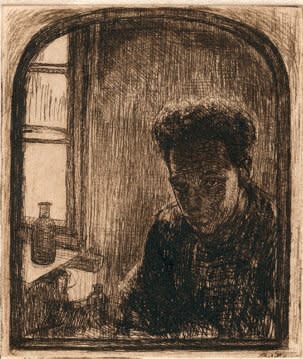Painter Henry Inlander was born into a Jewish family in Vienna, Austria on 14 January 1925. In 1935, fearing the rise of Nazism, the family moved to Trieste, Italy, subsequently fleeing to England in 1938. Inlander studied at St Martin's School of Art (1939–41) and Camberwell School of Arts and Crafts (1945–46), where he was joined by Ernst Eisenmayer, whom he had met through the Austrian Centre in London. Subsequently, he went on to study at the Slade School of Art from 1949, winning the Prix de Rome in 1952, which provided him with the scholarship to travel to Italy and work at the British School in Rome, where he remained until 1956. He also exhibited in Italy and purchased a house in a small village near Rome, where he would regularly return throughout his life to paint the local views.
While Inlander's connection to Italy lasted a lifetime, he also spent time in the USA and Canada in the 1960s. He returned to the Camberwell School of Art as a Visiting Lecturer (in 1957) and later as Head of Painting. He exhibited in London's Leicester Galleries, at Roland, Browse & Delbanco, the New Art Centre, the Royal Academy, as part of the London Group and at Ben Uri Art Society (also serving as a member of the Ben Uri Art Committee in 1972). Inlander is predominantly known for his playfully expressionistic landscapes that blur the line between reality and imagination. Inlander's paintings are represented in multiple public collections worldwide, including Arts Council Collection, Government Art Collection, Tate, Yale Center for British Art and the Ben Uri Gallery and Museum. Henry Inlander died in London, England on 15 December 1983 and is buried in a Jewish cemetery in north-west London.


